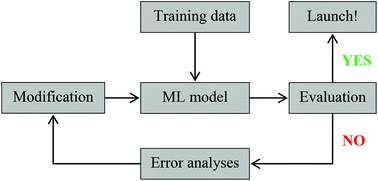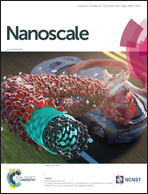Machine learning and artificial neural network prediction of interfacial thermal resistance between graphene and hexagonal boron nitride
Abstract
High-performance thermal interface materials (TIMs) have attracted persistent attention for the design and development of miniaturized nanoelectronic devices; however, a large number of potential new materials exist to form these heterostructures and the explorations of their thermal properties are time consuming and expensive. In this work, we train several supervised machine learning (ML) and artificial neural network (ANN) models to predict the interfacial thermal resistance (R) between graphene and hexagonal boron–nitride (hBN) with only the knowledge of the system temperature, coupling strength between two layers, and in-plane tensile strains. The training data were obtained by high-throughput computations (HTCs) of R using classical molecular dynamics (MD) simulations. Four different ML models, i.e., linear regression, polynomial regression, decision tree and random forest, are explored. A pair of one dense layer ANNs and another pair of two dense layer deep neural networks (DNNs) are also investigated. It is reported that the DNN models provide better R prediction results compared to the ML models. The thermal property predictions using HTC and ML/ANN models are applicable to a wide range of materials and open up new perspectives in the explorations of TIMs.



 Please wait while we load your content...
Please wait while we load your content...